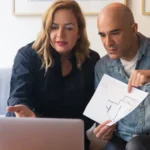
In a time where many Canadian retirees are asset-rich but cash-flow challenged, a reverse mortgage has become an increasingly discussed financial tool. But is it a smart decision or a long-term trap disguised as relief?
As interest rates shift and housing markets cool post-BoC rate cut in June 2025, understanding how a reverse mortgage works is more important than ever.
Table of Contents
What Is a Reverse Mortgage?
A reverse mortgage lets homeowners aged 55 and older convert part of their home equity into cash, without selling their home or making monthly payments. Unlike traditional mortgages, where borrowers pay the lender, reverse mortgages flip the model, the lender provides funds to the homeowner. Repayment kicks in only when the homeowner sells the property, moves out, or passes away.
How Does a Reverse Mortgage Work?
The borrower receives tax-free funds, either as a lump sum, fixed monthly payments, or a line of credit, while retaining full ownership of their property. Over time, the loan balance increases as interest accrues, but no repayment is required until a triggering event occurs. The most common trigger? Selling the home or death of the borrower.
Interest rates for reverse mortgages in Canada are higher than traditional mortgages, and as of July 2025, average rates hover around 7.5–8%, depending on the lender. This means equity erosion can happen faster than expected, especially if property values stagnate.
What is Reverse Mortgage Eligibility?
In Canada, to be eligible for a reverse mortgage, you generally must be a Canadian homeowner aged 55 or older, and the property must be your primary residence. If you have a spouse, both of you typically need to be at least 55 and included on the application. The amount you can qualify for depends on factors such as your age, the appraised value of your home, its location, and the property type. Unlike traditional loans, reverse mortgages usually have flexible qualification requirements as they don’t typically require an income test or a high credit score, making them accessible to retirees on a fixed income.
When is a Reverse Mortgage Due?
A reverse mortgage loan typically becomes due and payable when certain events occur:
- The homeowner sells the home.
- The last borrower on the mortgage dies.
- The last borrower permanently moves out of the home (e.g., into a long-term care facility) for a period of at least six months.
- The homeowner defaults on their obligations, such as failing to pay property taxes, maintain insurance, or keep the home in good repair.
Pros and Cons
Like any financial product, reverse mortgages have their advantages and disadvantages:
Pros:
- Access to Tax-Free Cash: You can unlock the equity in your home and receive tax-free funds without having to sell or move.
- No Monthly Payments: This is a significant benefit for retirees on fixed incomes, as it frees up cash flow.
- Retain Home Ownership: You continue to own your home and can live in it for as long as you wish, provided you meet the loan terms.
- Flexible Use of Funds: The money can be used for any purpose, such as home renovations, debt consolidation, healthcare expenses, or supplementing retirement income.
- No Income or Credit Score Requirements: This makes it easier to qualify compared to other lending options.
Cons:
- Higher Interest Rates: Reverse mortgages typically have higher interest rates compared to traditional mortgages or Home Equity Lines of Credit (HELOCs), as the lender takes on more risk by not requiring monthly payments.
- Accumulating Debt and Shrinking Equity: As interest builds up and gets added to the loan, your balance grows and your share of home equity shrinks over time.
- Impact on Inheritance: A growing loan balance can eat into your home’s equity, leaving your heirs with less or sometimes nothing to inherit.
- Additional Costs: There are often upfront costs, such as appraisal fees, application fees, and legal fees.
- Prepayment Penalties: You may incur fees if you choose to repay the loan early.
HELOC vs. Reverse Mortgage: What Should Retirees Choose?
A Home Equity Line of Credit (HELOC) is often the first recommendation, lower interest, flexible repayment, and fewer long-term costs. But here’s the catch: a HELOC requires proof of income and good credit. That’s where many retirees fall short.
If you’re eligible, a HELOC may be a smarter, more transparent option. But for homeowners with fixed incomes or poor credit, a reverse mortgage may be the only viable path to liquidity.
Conclusion
With Canada’s real estate cooling and the cost of living still high in mid-2025, reverse mortgages are a tempting, yet complex solution. The key lies in understanding your long-term financial needs and what you’re willing to trade, equity for stability or inheritance for independence.
Looking for a clearer way to unlock your home’s equity?
At Cannect, we help you explore all your options, from reverse mortgages to HELOCs and refinancing strategies. Our expert advisors provide transparent guidance based on real-time rates and your unique needs.
















No Comments